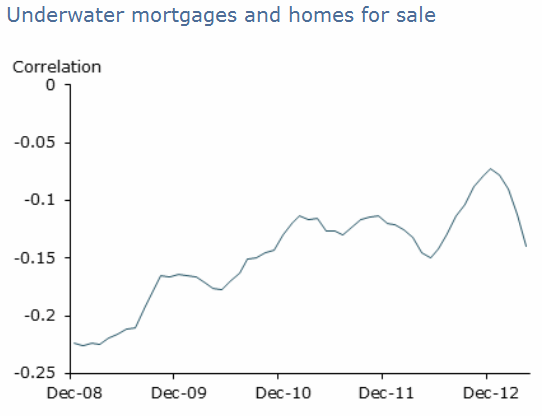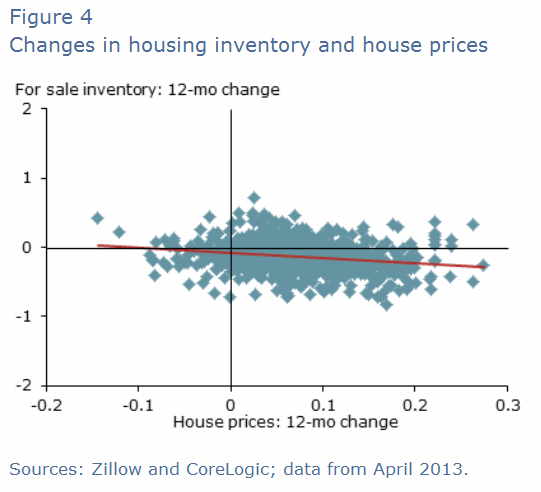Here is an interesting article from mortgagenews.com. The implications of existing home sales increasing are positive to all the stakeholders - including buyers, sellers and financiers of these homes.
Existing-home sales improved in May and remain solidly above a year
ago, while the median price continued to rise by double-digit rates from
a year earlier, according to the National Association of Realtor.
Total existing-home sales,
which are completed transactions that include single-family homes,
town homes, condominiums and co-ops, rose 4.2 percent to a seasonally
adjusted annual rate of 5.18 million in May from 4.97 million in April,
and is 12.9 percent above the 4.59 million-unit pace in May 2012.
Lawrence Yun,
NAR chief economist, said the recovery is strengthening and to expect
limited housing supplies for the balance of the year in much of the
country. “The housing numbers are overwhelmingly positive. However,
the number of available homes is unlikely to grow, despite a nice gain
in May, unless new home construction ramps up quickly by an additional
50 percent,” he said. “The home price growth is too fast, and only
additional supply from new home building can moderate future price
growth.”
Existing-home sales are at the highest level since November 2009 when
the market jumped to 5.44 million as buyers took advantage of tax
stimulus. Sales have stayed above year-ago levels for 23 months, while
the national median price shows 15 consecutive months of year-over-year
increases.
Total housing inventory at the end of May rose 3.3 percent to 2.22
million existing homes available for sale, which represents a 5.1-month
supply at the current sales pace, down from 5.2 months in
April. Listed inventory is 10.1 percent below a year ago, when there
was a 6.5-month supply.
The national median existing-home price for all housing
types was $208,000 in May, up 15.4 percent from May 2012. This marks
six straight months of double-digit increases and is the strongest price
gain since October 2005, which jumped a record 16.6 percent from a year
earlier. The last time there were 15 consecutive months of
year-over-year price increases was from March 2005 to May 2006.
Distressed homes4 – foreclosures and short sales –
accounted for 18 percent of May sales, unchanged from April, but
matching the lowest share since monthly tracking began in October 2008;
they were 25 percent in May 2012. Fewer distressed homes, which
generally sell at a discount, account for some of the price gain.
Eleven percent of May sales were foreclosures, and 7 percent were
short sales. Foreclosures sold for an average discount of 15 percent
below market value in May, while short sales were discounted 12 percent.
According to Freddie Mac, the national average commitment rate
for a 30-year, conventional, fixed-rate mortgage rose to 3.54 percent
in May from 3.45 percent in April; it was 3.80 percent in May 2012.
NAR President Gary Thomas,
broker-owner of Evergreen Realty in Villa Park, Calif., said market
conditions today are vastly different than during the housing boom.
“The boom period was marked by easy credit and overbuilding, but today
we have tight mortgage credit and widespread shortages of homes for
sale,” he said.“The issue now is pent-up demand and strong growth in the number of
households, with buyer traffic 29 percent above a year ago, coinciding
with several years of inadequate housing construction. These conditions
are contributing to sustainable price growth,” Thomas said.The median time on market for all homes was 41 days in May, down from
46 days in April, and is 43 percent faster than the 72 days on market
in May 2012. Short sales were on the market for a median of 79 days,
while foreclosures typically sold in 43 days and non-distressed homes
took 39 days.
Forty-five percent of all homes sold in May were on the market for
less than a month. The median time on the market is the shortest since
monthly tracking began in May 2011; on an annual basis, a separate NAR
survey of home buyers and sellers shows the shortest selling time was 4
weeks in both 2004 and 2005.
First-time buyers accounted for 28 percent of purchases in May, compared with 29 percent in April and 34 percent in May 2012.
All-cash sales were at 33 percent of transactions in May, up from 32
percent in April and 28 percent in May 2012. Individual investors, who
account for many cash sales, purchased 18 percent of homes in May; they
were 19 percent in April and 17 percent in May 2012.
Single-family home sales rose 5.0 percent to a seasonally adjusted
annual rate of 4.60 million in May from 4.38 million in April, and are
12.7 percent higher than the 4.08 million-unit pace in May 2012. The
median existing single-family home price was $208,700 in May, up 15.8
percent above a year ago, the strongest increase since October 2005 when
it jumped 16.9 percent from a year earlier.
Existing condominium and co-op sales slipped 1.7 percent to an
annualized rate of 580,000 units in May from 590,000 in April, but are
13.7 percent above the 510,000-unit level a year ago. The median
existing condo price was $202,100 in May, which is 11.8 percent above
May 2012.
Regionally, existing-home sales in the Northeast rose 1.6 percent to
an annual rate of 650,000 in May and are 8.3 percent above May 2012.
The median price in the Northeast was $269,600, up 12.3 percent from a
year ago.
Existing-home sales in the Midwest jumped 8.0 percent in May to a
pace of 1.21 million, and are 16.3 percent higher than a year ago. The
median price in the Midwest was $159,800, up 8.2 percent from May 2012.
In the South, existing-home sales rose 4.0 percent to an annual level
of 2.09 million in May and are 16.1 percent above May 2012. The median
price in the South was $183,300, which is 15.0 percent above a year
ago.Existing-home sales in the West increased 2.5 percent to a pace of
1.23 million in May and are 7.0 percent above a year ago. With the
tightest regional supply, the median price in the West was $276,400, up
19.9 percent from May 2012.The National Association of Realtors, “The Voice for Real
Estate,” is America’s largest trade association, representing 1 million
members involved in all aspects of the residential and commercial real
estate industries. For additional commentary and consumer information.
Existing-home sales, which include single-family,
townhomes, condominiums and co-ops, are based on transaction closings
from Multiple Listing Services. Changes in sales trends outside of MLSs
are not captured in the monthly series. NAR re benchmarks home sales
periodically using other sources to assess overall home sales trends,
including sales not reported by MLSs.
Existing-home sales, based on closings, differ from the U.S. Census
Bureau’s series on new single-family home sales, which are based on
contracts or the acceptance of a deposit. Because of these differences,
it is not uncommon for each series to move in different directions in
the same month. In addition, existing-home sales, which account for
more than 90 percent of total home sales, are based on a much larger
data sample – about 40 percent of multiple listing service data each
month – and typically are not subject to large prior-month revisions.
The annual rate for a particular month represents what the total
number of actual sales for a year would be if the relative pace for that
month were maintained for 12 consecutive months. Seasonally adjusted
annual rates are used in reporting monthly data to factor out seasonal
variations in resale activity. For example, home sales volume is
normally higher in the summer than in the winter, primarily because of
differences in the weather and family buying patterns. However,
seasonal factors cannot compensate for abnormal weather patterns.
Single-family data collection began monthly in 1968, while condo data
collection began quarterly in 1981; the series were combined in 1999
when monthly collection of condo data began. Prior to this period,
single-family homes accounted for more than nine out of 10 purchases.
Historic comparisons for total home sales prior to 1999 are based on
monthly single-family sales, combined with the corresponding quarterly
sales rate for condos.
Total inventory and month’s supply data are available
back through 1999, while single-family inventory and month’s supply are
available back to 1982 (prior to 1999, single-family sales accounted for
more than 90 percent of transactions and condos were measured only on a
quarterly basis).
The median price is where half sold for more and half
sold for less; medians are more typical of market conditions than
average prices, which are skewed higher by a relatively small share of
upper-end transactions. The only valid comparisons for median prices are
with the same period a year earlier due to a seasonality in buying
patterns. Month-to-month comparisons do not compensate for seasonal
changes, especially for the timing of family buying patterns. Changes
in the composition of sales can distort median price data. Year-ago
median and mean prices sometimes are revised in an automated process if
additional data is received.





 Daren Blomquist, Vice President of Realty Trac said that the steadily rising home prices are lifting all boats in this housing market and should spill over into more inventory of home for sale in the coming months. " Home owners who already have ample equity are quickly building on that equity, while the 8.3 million homeowners on the fence with little or no equity are on track to regain enough equity to sell before 2015 if home prices continue to increase at the rate of 1.33 percent per month that they have since bottoming out in March 2012."
Daren Blomquist, Vice President of Realty Trac said that the steadily rising home prices are lifting all boats in this housing market and should spill over into more inventory of home for sale in the coming months. " Home owners who already have ample equity are quickly building on that equity, while the 8.3 million homeowners on the fence with little or no equity are on track to regain enough equity to sell before 2015 if home prices continue to increase at the rate of 1.33 percent per month that they have since bottoming out in March 2012."





